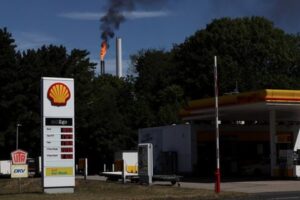On the heels of Tesla’s (TSLA) impressive Q4 deliveries report, Ford Motor (NYSE:F) revealed that it’s also experiencing robust demand for its new electric vehicles (EVs) and is quickly becoming a major force in the EV space. Just three months after Ford doubled its F-150 Lightning pickup production plan to 80,000, the company announced this morning that it’s doubling its production target again to 150,000 vehicles per year. With about 200,000 reservations taken for the all-electric F-150 Lightning, Ford has paused taking new reservations and has turned its attention to fulfilling current demand. In addition to the very successful launch of the Mustang Mach-E, which helped push Ford’s EV sales higher by 154% in November, the building momentum for the F-150 Lightning has the company primed to seize the #2 spot in the North American EV market.
Ultimately, Ford intends to become the leading EV maker in North America, but it has a tall hill to climb. For some perspective, TSLA is on target to deliver around 1.5 mln EVs in 2022 as it ramps up new factories in Austin, TX and Berlin, Germany this year. If all goes according to plan for Ford, its total EV production capacity will max out at about 400,000 vehicles in 2023 and will potentially increase to 600,000 in 2024. To reach that target would represent a significant accomplishment considering extant supply chain issues and the burst of demand that’s forthcoming for EV batteries, chips, and other parts and components.
Main rival General Motors (GM) will give Ford a run for its money in the race to the #2 spot as it pours $35 bln into its EV development plans over the next few years. By 2025, GM expects to launch over 30 EVs, and it forecasts that its annual EV revenue will soar from about $10 bln in 2023 to around $90 bln by 2030. Add in newcomer Rivian Automotive (RIVN) to the mix, with its estimated ~600,000 in annual production by 2024, and the stress on the EV supply chain figures to greatly intensify. A key advantage for Ford, though, is that it is building three new battery plants that can perpetually recycle EV batteries, thereby eliminating all battery imports, which rely on precious metals from foreign mines.
Customer enthusiasm for EVs in general is lifting many boats in the automaker industry, but Ford shared one statistic indicating that its gaining ground on the field. Specifically, the company stated that 75% of reservation holders for the F-150 Lightning are new to the Ford brand. A key caveat is that a reservation doesn’t equate to a final order and that competition will continue to heat up, with GM set to officially introduce its all-electric Silverado pickup tomorrow morning. However, the very high percentage of reservation holders new to Ford is still a compelling data point that bodes well for the company.
The main takeaway is that surging demand for the all-electric versions of Ford’s most prolific models — the F-150 and the Mustang — has turbo-charged its growth prospects, positioning it to realize its ambitious vision of becoming the second largest EV maker.





